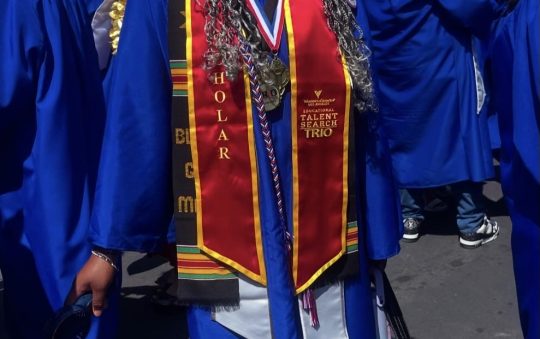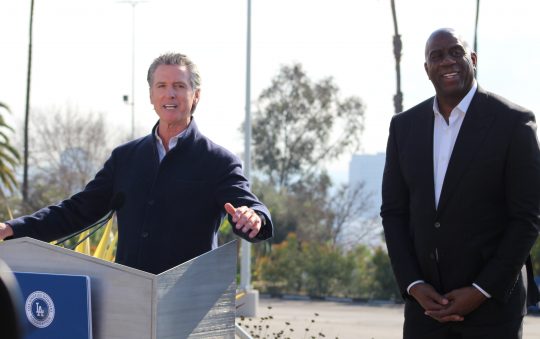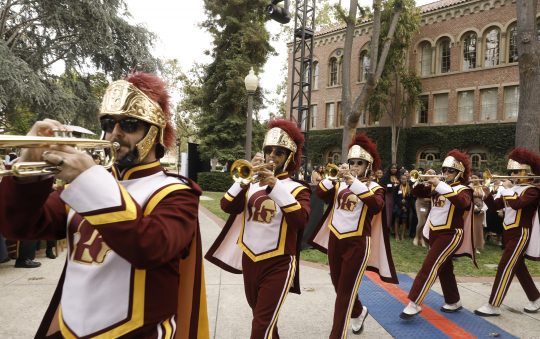
Thirty years ago, plumber George Holliday was asleep in his Lake View Terrace apartment when he was awakened by a commotion outside so loud it prompted him to grab his video camera and walk to his balcony to see what was amiss.
With a hovering Los Angeles Police Department helicopter’s spotlight providing the illumination, the scene Holliday captured with his Sony Handycam changed history.
It was March 3, 1991, and through the lens of his camera, Holliday recorded four white Los Angeles police officers using batons, Tasers and feet to subdue a Black man later identified as Rodney King, whose name quickly became globally synonymous with police brutality.
King, an unemployed construction worker who had been drinking and was on probation for a robbery conviction, was instructed to pull over for speeding on a Los Angeles freeway. He eventually stopped his car in front of Holliday’s apartment building, where Los Angeles police took charge of the traffic stop that devolved into a violent confrontation as officers trying to subdue King pounded on him repeatedly, as others looked on.
King was left with skull fractures, broken bones and teeth and permanent brain damage. Holliday, who recorded the beating just after midnight, contacted KTLA5 later that day. The station became the first to air the footage that would be seen across the globe, becoming what would today be considered a viral video.

The video led to upheaval within the Los Angeles Police Department, sparking calls for the ouster of then-Chief Daryl Gates and prompting the appointment of the Christopher Commission to examine the inner workings of the LAPD and allegations of excessive force and institutional racism.
When the four officers involved in the King beating were acquitted a year later of excessive use of force by a jury in Ventura County, five days of rioting ensued in Los Angeles, resulting in 54 deaths, some 2,400 injuries, scores of destroyed buildings and other property damage, and more than 12,000 arrests. The acquitted police officers were later convicted of violating Rodney
King’s civil rights in a federal court trial.
On Wednesday afternoon, the LAPD, acknowledging the 30-year anniversary of the King beating, released a video highlighting changes made in the department over the past three decades.
Capt. Stacy Spell narrates the video, which discusses revisions to the agency’s use-of-force policies, the use of non-lethal weapons to subdue subjects, elimination of choke holds, changes requiring officers to intervene and report misconduct, the use of body cameras and intensive disciplinary process.
“Today’s and tomorrow’s LAPD is vastly different as we reflect on the Rodney King incident 30 years later,” Spell says in the video. “One area where this is evident is the department’s high use-of-force standards. There’s been a revamp of the how the department investigates, reviews and adjudicates use-of-force incidents.”
The two-and-a-half-minute video concludes with the words, “30 years after the Rodney King incident, the Los Angeles Police Department is reimagined and dedicated to protect and to serve all Angelenos.”
King, a Sacramento native, died in Rialto on June 17, 2012, of what was described as an accidental drowning. He was 47. Before his death, he authored “The Riot Within: My Journey from Rebellion to Redemption.”
The grainy footage Holliday shot that night made the then-31-year-old plumber a pioneer of citizen journalism. The Sony video camera used to record the episode went up for auction last July, with bidding starting at $225,000, but it was unclear if it was ever sold.
In April 2019, King’s daughter, Lora King — who was 7 years old when her father was beaten, and 8 when the urban unrest started in L.A. — began the “I Am A King” scholarship to celebrate black fathers.
In 2016, she created an organization in his honor, The Rodney King Foundation. Lora King and other King family members commemorated the 30th anniversary of his beating by feeding over 500 low-income families in Watts on Wednesday.
Holliday told The New York Times last year that he still works as a plumber, never profiting from the video, which was still in the possession of federal authorities.
He told the paper he had purchased the video camera about a month before the King beating, and he grabbed it instinctively when he and his wife were awakened by the police ruckus outside his window.
“You know how it is when you have a new piece of technology,” he told the paper. “You film anything and everything.”






